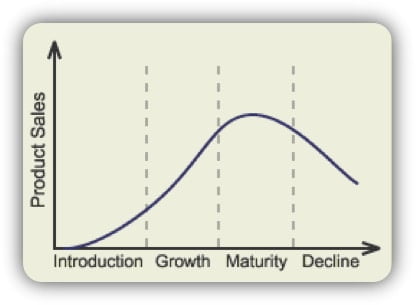 This graph represents the model of product life cycles as taught in business schools for the last, oh, I don’t know, 100 years?
This graph represents the model of product life cycles as taught in business schools for the last, oh, I don’t know, 100 years?
Companies would innovate, and introduce a new product. If it succeeded, they would experience growth. At some point, sales would peak. The product would then tend to become obsolete or overtaken by competitors, and sales would decline.
What a quaint model. Too bad it bears no resemblance to todays’ reality. Many industries are now finding that product obsolescence now occurs during the growth stage; in the hi-tech industry, the “decline” phase caused by instant obsolescence can even occur during the introduction,
Back in June, I was the opening speaker for the Consumer Electronics Association CEO Summit in Ojai, California, and spoke to this trend. At the time, Lenovo had just pulled the plug on a pad-like product, even before it was released, because it was obvious that its’ limited feature set had already made it irrelevant and obsolete in a very fast paced market.
The reality of today’s market is that of instant obsolescence, and if you want to master innovation, you need to think about how your own product life cycle is changing.
Here’s a video take that is worth watching on the trend:





GET IN TOUCH
Jim's Facebook page
You'll find Jim's latest videos on Youtube
Mastodon. What's on Jim's mind? Check his feed!
LinkedIn - reach out to Jim for a professional connection!
Flickr! Get inspired! A massive archive of all of Jim's daily inspirational quotes!
Instagram - the home for Jim's motivational mind!